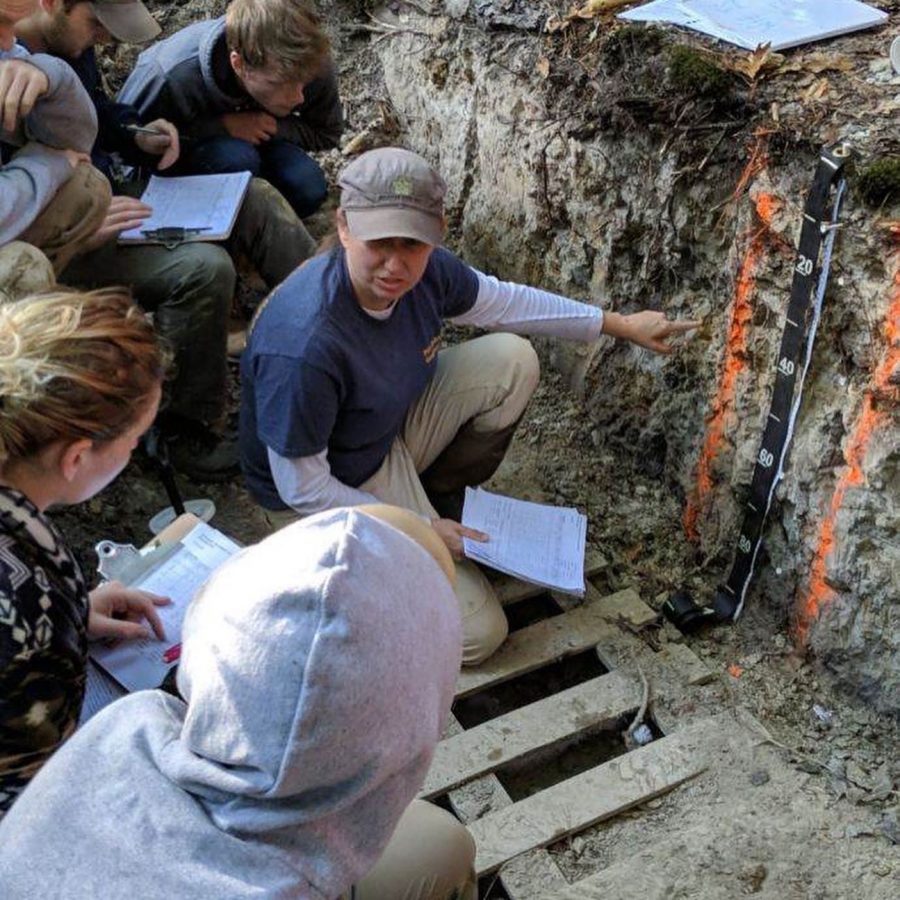New shovels for dirt diggers
March 4, 2020
According to Environmental Studies professor Mitzy Schaney, a Pitt-Johnstown soil judging team has received a university Momentum Fund Seeding Grant to purchase new equipment.
Soil judging is a hands-on learning experience in which individuals learn from experienced soil scientists about the classification and identification of soil features to determine suitability for human use, according to Schaney.
According to team member senior Alex Colosimo, competitors describe a soil profile based on many characteristics, such as soil color and texture.
“From those characteristics, the soil judger can distinguish between the different soil layers present, which are given to the student before they enter the competition.
“The objective of the competition is to have the most correct soil profile description.
“Correctness is based off prior soil profile descriptions from professional soil scientists, that have profiled the same soil pit,” Colosimo said.
“I had a blast learning about the different soil characteristics and how to describe a soil profile.
“It was different than anything I have ever done before, and I think that is why I enjoyed judging so much.
“Dr. Schaney is an excellent soil scientist who prepared us to do very well in our first soil judging competition during the fall semester. It was an experience that I will not soon forget,” Colosimo said.
According to Colosimo, last semester Pitt-Johnstown team members had to borrow expensive equipment from other soil judging teams due to a lack of funds.
The grant awarded was $5,550.
According to Schaney, soil color textbookare used to identify the hue, value and chroma of the color of the soil.
“We also use soil knives and rock hammers to pick at the soil profile to retrieve samples.
“Sometimes soil can be compacted so we have spray bottles to dampen the soil. Small sieves to separate out gravels and help with soil texture.
“We have shovels to dig holes and look at the soil and hand lenses to look at minerology.
“We also use acid bottles to test for calcite.
“Soil judging also consists of land use interpretations, some of which require calculations, so we invested in calculators.
“We have clinometers to measure slope of the land surface, again for land use interpretations.
“Of course each student has a clipboard for notes and forms, and all this equipment is toted around in buckets.
“Pitt-Johnstown was the only regional campus to receive this award, which makes it particularly special for our team,” Schaney said.
According to senior Joece Lynn, the knowledge she gained from competing was a learning experience that had a leg up on traditional classroom lectures.
“Traveling and studying different geography and geology is so important for environmental students.
“I think that is one of the best parts about this experience.
“It is all about learning how the soil was used historically, how the soil developed, and how that impacts future land use.
“That knowledge is critical for anyone in the environmental field to understand – not just soil scientists.
“I am unbelievably thankful I got the opportunity to experience soil judging.
“I can’t wait to see this team bring home titles and trophies in the years to come,” Lynn said.
The 2019-2020 academic year was the first year for the Pitt-Johnstown soil judging team.
Last October, the team traveled to Easton, Maryland, for the Northeast Regional Collegiate Soil Judging Competition hosted by the University of Maryland.
In October 2020, the team is to attend the 2020 Northeast Regional Collegiate Soil Judging Competition hosted by Delaware Valley University.

